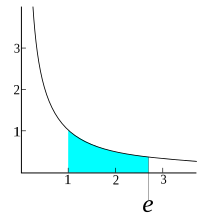
Photo from wikipedia
OBJECTIVES Patients with Trisomy 21 (T21) commonly have gastrointestinal symptoms and diseases that prompt evaluation with esophagogastroduodenoscopy (EGD). Our objective is to characterize duodenal histological abnormalities in these patients when… Click to show full abstract
OBJECTIVES Patients with Trisomy 21 (T21) commonly have gastrointestinal symptoms and diseases that prompt evaluation with esophagogastroduodenoscopy (EGD). Our objective is to characterize duodenal histological abnormalities in these patients when undergoing EGD. A secondary aim is to explore associations of histologic findings with different therapies. METHODS Patients 30 years old or younger with T21 who underwent EGD from 2000-2020 at six hospitals were included in this retrospective cohort study. Duodenal biopsies were categorized based on reported histopathology findings as normal or abnormal. Abnormal pathology reports were reviewed and categorized into villous atrophy (VA), and duodenitis without VA. The VA group was further categorized based on the presence or absence of celiac disease (CD). RESULTS We identified 836 patients with T21 who underwent EGD, 419 (50.1%) of whom had duodenal histologic abnormalities. At the time of the first (index) abnormal duodenal biopsy, 290/419 had VA and of those, 172/290 met CD diagnostic criteria, while 118/290 did not meet CD criteria (non-specific VA). Among the patients with an abnormal biopsy, acid suppression at the time of the index biopsy was less common in patients with VA-CD compared to patients without VA or patients with non-specific VA (12.2% vs. 45.7% vs. 44.9%). CONCLUSIONS Half of the T21 patients in this cohort had abnormal duodenal biopsies including a subgroup with non-specific VA. In this cohort, acid suppression use was more prevalent in patients with abnormalities other than celiac disease.
Journal Title: Journal of pediatric gastroenterology and nutrition
Year Published: 2023
Link to full text (if available)
Share on Social Media: Sign Up to like & get
recommendations!